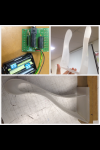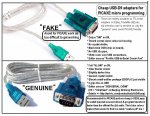In the other case if we did pursuit a load cell about how long will this process of you making circuit board and ordering a load cell would take? , as my project is formally due by 26 August.
Perhaps my method of using a load cell is over complicating a school project, although some schools i have visited the students are doing some rather advanced design work in electronic projects.
Stans idea of using a piezo for a sensor would well be worth you testing.
To answer your question on time to purchase a load cell and produce a circuit board for it, would all depend on the shipping time from China for the load cell, which is around 3 weeks on average but can be longer or shorter.
I would just need time to etch and assemble the load cell circuit board (its a SMD board) , as its a board i have made previous and the artwork is already done.
Ideally you would use 2 load cells wired in parallel, one each end of the shelf to prevent sideways twisting of the cells, although with some design care in mounting, a single cell could be used. (load cells dont like sideways loading)
The cheap cells from China are not usually temperature compensated so some thermal drift will result over time, this is not usually a problem and can be allowed for in program.
How i think you might use a load cell is when the IR sensor is triggered, a shelf weight would be read by the picaxe and stored, then its just a matter of monitoring the shelf weight with further readings to see if weight is removed or added to the shelf from the stored weigh.
This way the thermal drift would not effect the operation as the stored weigh is reset every time the IR sensor is triggered.
I doubt you would need to actually display the weight, only use it to see if the shelf weight has changed within the given time period allowed.
What will power this shelf circuit, batteries, plug pack, and at what voltage, because a regulated smooth constant 5v supply is required for load cell use, changes in supply voltage will effect the cell readings (flat batteries etc)
How good are your programming skills and your ability to construct a circuit with soldering etc.
Please note... i have no intention of doing your project for you, my advice and assistance is only intended to help you establish a direction and a method for you to advance forward with your project.
If you choose to go with a load cell i will assist with a circuit board to read the cell/s, and a basic picaxe program example to read in 20 bits of data from the cell, of which 16 bits is used in program, so if you are able to work with 16 bits of data as a weight measurement and think you can code that into your project its an option you might like to consider.
If it sounds to be to complicated for your ability then you might best look to other methods.



